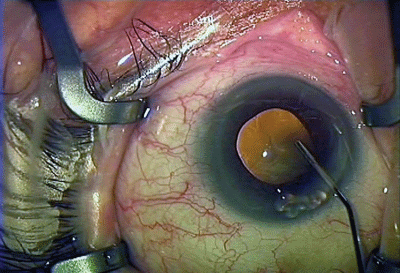

The atonic pupil should be recognized as a possible complication of cataract surgery that should be included in the preoperative consent form. Common causes for iris-related anisocoria include previous corneal or. The pupillary motility may be changed which will in turn affect both pupillary light reflexes and pupillary dilatation during fundus examination. The presence of pupil abnormalities and iris modifications is cosmetically undesirable and may affect the quality of postoperative vision. We believe this condition occurs more frequently than previously reported. A misshapen and/or asymmetrical pupil is usually due to disease of the iris (Figure 1). Most, if not all, ophthalmologists strive to achieve a round pupil after cataract surgery with posterior chamber lens implantation.

By looking at the affected pupil, you can sometimes see that it is larger than the other pupil. But for some people, the pupils are not always the same size. For most people, the pupils react to light, either enlarging or shrinking equally. Urrets-Zavalia syndrome (UZS) was first described in 1963 as the appearance of a fixed and dilated pupil following penetrating keratoplasty for keratoconus in. This is probably a conservative figure since many cases undoubtedly go unnoticed because of a lack of visual disturbance. The black spot in the center of your eye is known as the pupil. One annoying thing is that my pupil stays about 3/4 of the way dilated and doesn't seem to change. I still have a bunch of floaters and 'black pepper' spots which move in the eye, which I think is a part of the healing process. Of the 567 respondents, 60% had seen at least one case of atonic pupil in the past five years they reported a total of 1543 cases during that time. My vision seems to be coming back very well a bit every day, and the bubble is about 1/2 the size it was originally. If the patient’s irides are dark and the pupils are difficult to visualise, the clinician can use an ophthalmoscope to assess differences in the red reflex.

While it is normal for pupils to be slightly different size, large or new anisocria. To estimate the incidence of atonic pupil after cataract surgery, we sent a survey on the frequency, clinical features, and possible etiologies of this syndrome to members of the American Society of Cataract and Refractive Surgery. conditions with both pupils equally illuminated. Unequal pupil sizes, called anisocoria, is a common vision condition. All patients had normally reactive pupils one day postoperatively, but after two weeks, the pupils were dilated and nonreactive to light, accommodation, and miotics. Conclusions: : The change in maximal pupil constriction following cataract surgery is consistent with an increase in light transmission into the eye following. We report and describe the clinical findings of three patients who developed atonic pupil after uncomplicated extracapsular cataract extraction with posterior chamber intraocular lens implantation.


 0 kommentar(er)
0 kommentar(er)
